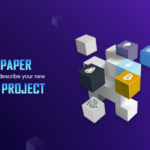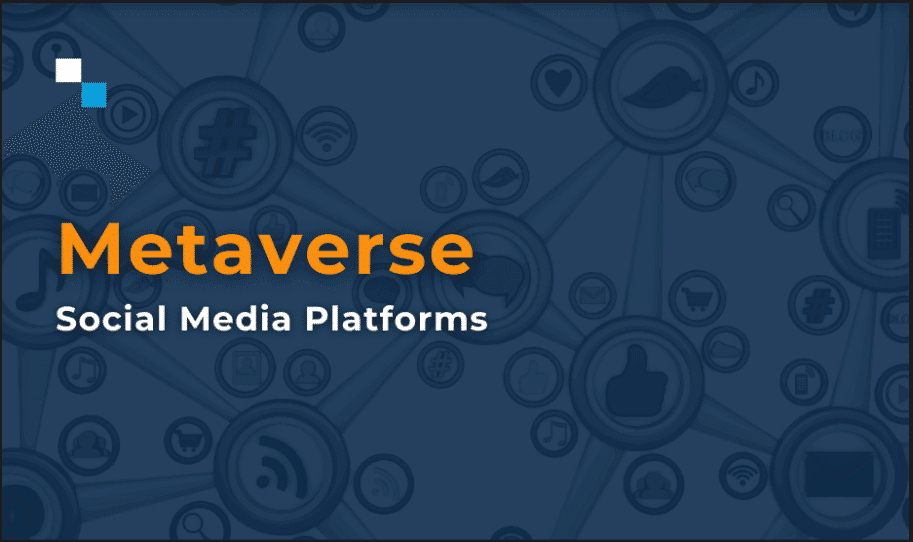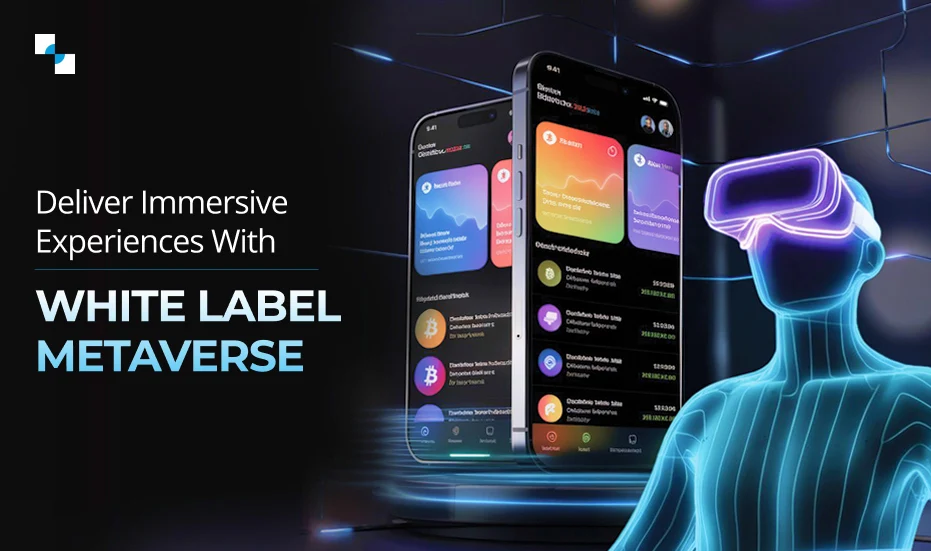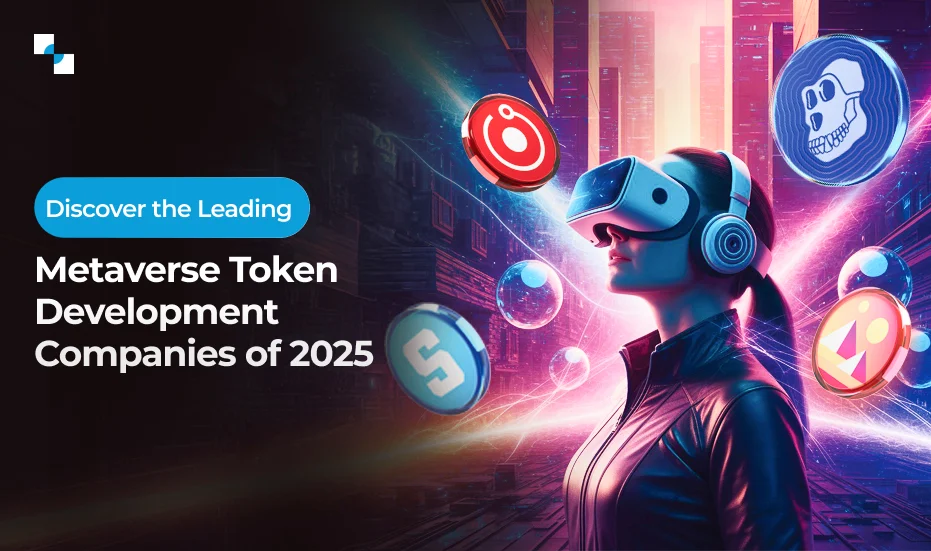Social media networks marked the arrival of web 2 more than a decade ago. So far, they have successfully formed the neural network of the body called the digital landscape. It attracted billions of users to produce content and as a result, we are a mammoth community of 4.6 billion social media users.
Entering web3, expectations from social media have sky-rocketed and users want more than just an exchange of content through texts and videos. This is the era of blockchain and metaverse social media development.
So, the idea is to add a 3-D layer to all the products and services from web2 and deliver the closest to real-time experience, as far as possible.
Metaverse social media networks have enabled users to produce more content while the enterprises running the platform gain total control of the data. No matter, this has matured us into a better; more connected society but also raised concerns around user data privacy and confidentiality.
Decentralized metaspaces in web 3.0 aim to address such issues. Not only has it enabled ownerless peer-to-peer engagements but also delivers a more personalised and immersive experience. Among many, the key expectations from a social media platform inside a metaverse include:
- Immersive Experience
Simulations of real-life elements deliver an elevated personalized user experience. - Privacy Protection
The user information is saved over a decentralized network thereby ensuring an end to end confidentiality. - Interoperability
Seamless interoperability between different social platforms in the same metaverse or between different metaverse environments ensures wider reach.
Antier has had the opportunity of working on a few interesting use cases. In this post, we share what we learned from our experience of working on live implementations.
Why should you opt for Metaverse Social Media Platform Development?
Social media is a crowded space as there’s no ‘one’ popular platform anymore. More applications are entering the scene and making it challenging to stay relevant and innovative.
Not to miss, the rising user concern around privacy, intrusive ads, hacks etc. have fuelled the adoption of blockchain. The technology introduced the ground-breaking concept of decentralized finance and NFTs. And the metaverse arrived at the perfect time.
It brings together elements of social media such as collaboration, engagements, digital commerce, marketing and others via a 3-dimensional, immersive environment.
The Metaverse is an extension of social media. It builds immersive and personalised experiences for users. Metaverse will bring together many familiar elements of social media, such as collaboration, commerce, live events, and immersive experiences that are based on virtual reality and augmented reality (AR).
Collaboration
Enterprises have the potential to make a lot of money from the Metaverse social media development. It will enable global users to directly interact with each other in a virtual environment and embrace benefits from the gamification of processes.
Engagements
Influencers and marketers can reach out to millions of people through their content and attract likes, comments, and queries and build personalized communities. A great medium for thought leadership and branding.
A good example here is Skurpy, a metaverse social media platform that lets users create their private communities. Beyond chats and video calls, the users can step into the meeting room and
Digital commerce
One of the greatest activities on social media, social commerce has a similar scope in the metaverse. Brands can advertise their products through virtual stores and let users make online orders. They can also purchase digital products. NFTs have a great scope here.
Live Events
This works closely with the collaboration part wherein marketers or even general users can conduct or participate in conferences, seminars, live musical shows etc. A well-designed Metaverse social Media platform can provide the medium to advertise and stream such events.
Virtual Search
In a metaverse social media platform, users can search for their preferred product or entity through the search option. It is an enhanced version of the search help on a 2D platform. When integrated with AI-enabled RPAs, the brands produce targeted results for the users.
Virtual Advertising
Advertisers can utilize the metaspace to create billboards and offer a trial of products and platforms. For example, a real estate builder can invite customers to take a virtual tour of the space by advertising on social media groups.
3D Avatars
Every user will have a unique ID in the metaverse through virtual 3D avatars. So while consuming all the virtual services, for example greeting each other in live events means users address each other’s 3d virtual avatars.
Virtual Influencing
Social media marketers may begin creating content using augmented reality. They may partner up with producers and celebrities to sell products. While working on your metaverse social media development project, make sure you provide features to onboard more influencers.
NFTs & Marketplaces
NFTs are a crucial element for driving social commerce inside the metaverse. Users can tokenize their digital assets into non-fungible tokens. These NFTs could be used in social commerce. A very common example would be NFT tickets for a live event hosted by an influencer. Moreover, tokenizing social media content, social commerce and integrating marketplaces are just a few examples. We’ll be discussing this in detail in a separate post.
What are the benefits of Metaverse Social Media for Marketers
Social communities are a goldmine of data for marketers. As we know, BB and B2C marketers are proactively consuming social media channels and groups to publish thought leadership content, advertise their SME, and directly reach potential customers while building a sustainable brand. Now, all of this was happening in web 2.0.
No matter, it bridged the gaps between the sellers and the customers but it lacked an element of personalization. Web 3.0, through the metaverse social media platform development, is addressing exactly that.
All social media communications in web 2 plus the ability to interact virtually elevate the overall personalization experience. For example, a marketer, who was only organizing a webinar for the community till now can organize an event in the metaverse. The subscribers can walk into each other, communicate and build better engagements.
Monetization Opportunity for Influencers
Influencers are an integral part of the social media ecosystem and largely drive conversations across communities. In the metaverse, influencers can explore a wide range of opportunities such as hosting events, seminars & conferences, courses and other activities. A virtual platform would enable them to cater to a global audience, and build personalised and more interactive engagements with the attendees.
IZEA research, 51% of influencers are keen on embracing the metaverse for reaching their audience while 21% are already using it.
Now, a peer-to-peer social media platform inside a metaverse requires crypto finance to enable influencers for the following:
- Influencers can offer event tickets or subscriptions in crypto tokens.
- They can utilize NFTs for ticketing.
- They can use NFTs to tokenize their rare content such as lectures or creations etc.
- They purchase, book or offer on rent a real-estate property inside a metaverse.
- They strike partnerships with brands and offer rare discounts on certain products such as virtual clothing etc.
- Ultimately, they connect with global audiences regardless of borders and time zones.
These are just a few of the use cases around the scope of influencer monetization in a metaverse. Whatever use cases we see in the web 2.0, versions can be replicated in a more interactive way for the virtual world.
It is also important to note that the rise of brands creating avatars inside a metaverse will directly increase the demand for influencers to market them.
What is SocialFi: Future of Metaverse Social Media Development
In web3, it is essential to consider blockchain and DeFi for the metaverse. Exactly why, metaverse social media development depends upon decentralized finance for delivering a community-driven and democratic experience. SocialFi integrates social media and blockchain-based decentralized finance thereby enabling peer-2-peer engagements backed by smart contracting.
While blockchain social media development is already popular, the metaverse is the newest and perhaps a better use case. One of the best examples here would be Gravvity, a decentralized social media platform in the metaverse. As a hyper-realistic social media platform, Gravvity uses cryptocurrencies to reward user activity on the platform. Apart from controlling the type of content on the news feed, users can monetize it and earn passive income.
Steps involved in Metaverse social media platform development
Here’s the process of metaverse social media development that you should know.
Step 1: Decide on a metaverse architecture
Users communicating in a decentralized environment benefit from encryption and borderless transfer of value through cryptocurrencies.
All of this inside the metaverse requires a strong blockchain foundation.
So in step no 1, finalize upon the underlying blockchain platform like Solana, Polygon, Ethereum, Cardano, Algorand etc.
The choice of blockchain can depend upon various factors such as the blockchain community, the blockchain speed, the ability to stream multimedia content from millions of users etc. Likewise, the blockchain should provide a robust DeFi infrastructure and support for NFTs.
All of these are essential parameters for a successful metaverse.
While we are at it, you can also build your layer-1 blockchain from scratch. However, that’s the least recommended given the readily available choices in the business.
Therefore, select a metaverse ecosystem. Decide whether you want to utilize existing ecosystems such as Sandbox or build your meta world from scratch. The latter option will enable you to build a fully customzied world.
No matter it is expensive but better suited for customized metaverse applications, specifically the big ventures.
Step 2: Create the metaspace
The logical next step after determining the metaverse solution is to develop the metaspace. A metaspace can be a software application, a virtually simulated meeting room, a digital convention centre, or even an immersive projection screen. Metaspace is a simulated realm that may be accessed via a Head-mounted display.
Once you have decided upon the blockchain, next comes designing the metaspace. To put it simply, a metaspace is a virtually simulated
Users can engage with the surroundings and other individuals within the metaspace. So, to build a digital conference room, you must first develop the digital metaspace that will be incorporated with the Metaverse.
You’ll need the assistance of a developing multimedia organization specializing in the design process and VR-based products to create the interactive reality space.
Step 3: Construct an interactive element
The third stage in Metaverse social media platform development is to create an interactive element that allows your customer to engage with the metaspace you’ve made. A 3D representation of conference space, for instance, is meaningless unless users can engage with it.
The interactive element specifies customer capabilities, accessibility restrictions, navigation handles, and customer communications methods. The interactive features also outline the collaboration of external systems and programs required to maintain the metaspace’s operations.
Step 4: Construct an interoperable Framework
Compatibility specifications allow functional procedures to facilitate data interchange and dissemination among multiple platforms. The purpose of compatibility is for individuals and computers to acquire and utilize information and virtual assets independently.
Metaverse authorizes money transfer channels that facilitate the transmission of cryptocurrencies. Comprehensively integrated virtual realms require the utilization of blockchain to facilitate safe, open, and decentralized activities.
This is just an overview of the process. Metaverse is an ocean and the scale of development can vary from project to project. Therefore, start by partnering with the right metaverse development company.
Hire a Metaverse Development Company
In this post, we discussed the scope of social media activities inside the metaverse. In order to fully unlatch the potential of web3, decentralization is important and metaverse social media is an interesting battleground to actualize the same.
Based on our metaverse development experience so far, we have no hesitation in accepting the inevitable rise of blockchain enabled metaverse worlds.
Off-late, team Antier has been working on some interesting use cases. Reach us to know more about this space.







